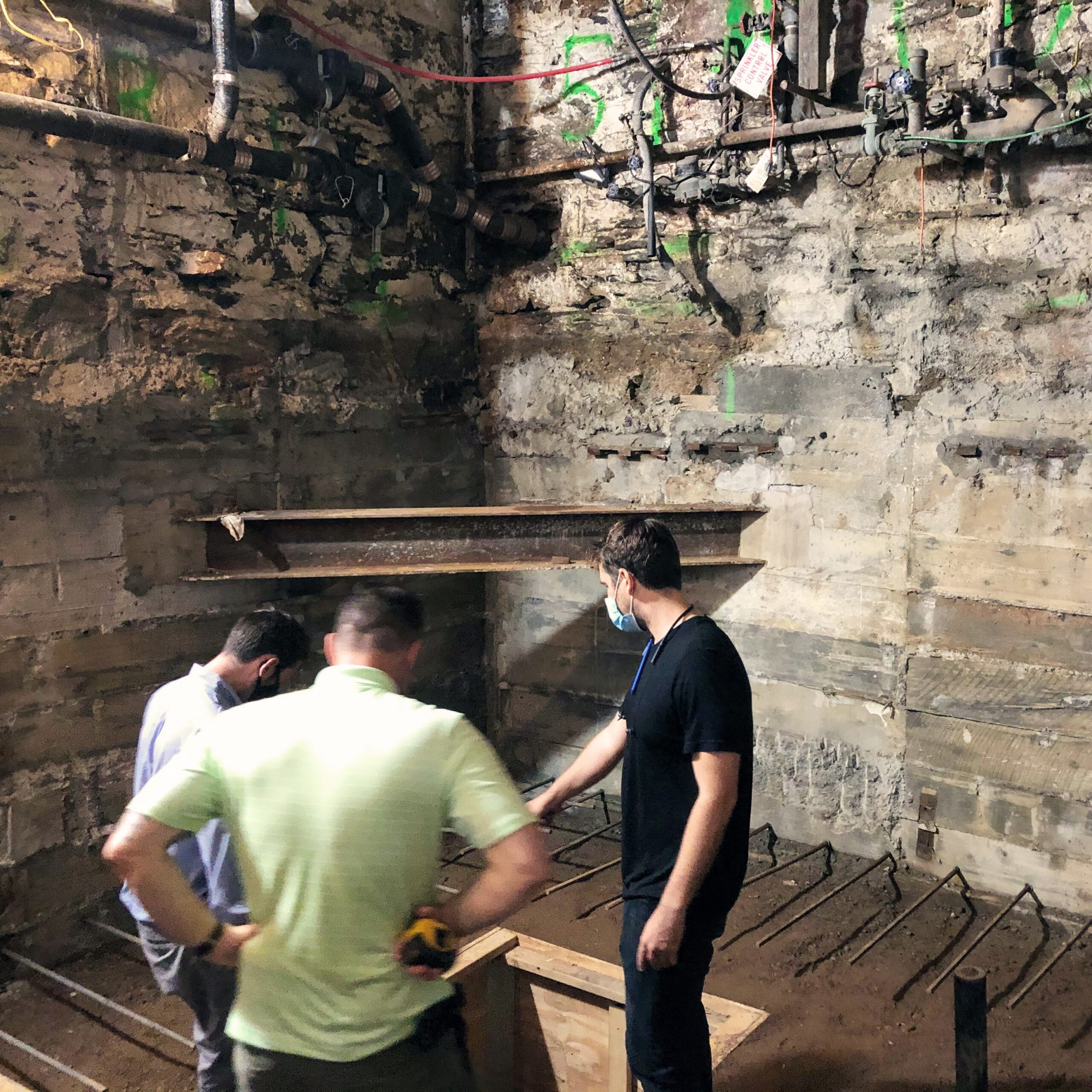
Understanding Excavation, Underpinning, and How It Relates To Luxury Single-Family Townhouses
Renovating a luxury townhouse in New York City is an exciting venture. But when looking to expand the townhouse to create more space and value, your options can be limited. Zoning limitations on height, bulk, open space, and floor area will often limit how much expansion is possible. Even when zoning permits expansion, depending on the location, the Landmarks Preservation Commission will also have a say in what is allowable. Often, expanding down offers the most potential.
This is not to say that it will be easy. On the contrary, excavating down to create additional space is complicated and expensive, but as this space is exempted from floor area calculations and is not visible from the street can be an excellent and approvable opportunity.
Many New York City townhomes were built with Party Walls. This means that the building’s side wall structure is shared with its neighbor. This had the advantage of saving space, but it means that any modification to this wall has to be done with extreme care and sometimes with the permission of the neighboring building.
One of the most important aspects of any renovation is ensuring that the building’s structural integrity is maintained or improved. Structural underpinning is one technique that can be used to achieve this goal. In this blog post, we will explore what structural underpinning is, the reasons why it might be needed as part of a luxury New York City townhouse renovation, its costs, benefits, and risks.
What is structural underpinning?
Structural underpinning is the process of strengthening or stabilizing the foundation of a building. This can be done by excavating beneath the existing foundation and installing new support structures, such as piers or piles or full foundation walls. The goal is to transfer the weight of the building to a stronger, more stable layer of soil, or to simply lower the footing and foundation that the building is sitting on to allow you to excavate down to utilize the space.
There are several reasons why structural underpinning might be necessary as part of a luxury New York City townhouse renovation that does. These include:
- Foundation damage: Over time, a building’s foundation may become damaged due to factors such as settlement, moisture, or soil erosion. Structural underpinning can help to repair or reinforce the foundation, preventing further damage and ensuring the building’s structural integrity.
- Increased load: If a building’s use is changing, such as converting a residential townhouse into a commercial space or adding additional floors, the existing foundation may not be able to support the increased load. Structural underpinning can provide the necessary support for the new use of the building.
- Code compliance: Renovations must comply with building codes and regulations. Structural underpinning may be required to meet these requirements, especially if the building has not been renovated in a long time.
- Increasing the head height of the cellar or adding an additional floor beneath the current building.
Costs of structural underpinning
In short – expensive.
The cost of structural underpinning will vary depending on several factors, such as the size and age of the building, the extent of the underpinning required, and the accessibility of the site. Generally, structural underpinning is a significant expense. Working in the dense urban fabric of New York City makes this even more difficult. The expense of excavation and underpinning depends very much on the specifics of the project, the condition of the neighboring buildings, and the depth of the excavation. These costs are compounded as in addition to the cost of the work, you will need to hire additional design professionals and potentially negotiate licensing agreements with your neighbors.
Often, but not always, the value of the additional floor area or head height outweighs the costs, but this often will be the single most expensive line item of the entire construction project.
Risks of Structural Underpinning
While structural underpinning has many benefits, it also carries some risks. These include:
- Structural damage: Improperly executed underpinning can cause further structural damage to the building, leading to costly repairs;
- Project delays: Structural underpinning can be a complicated process that can cause project delays, especially if unexpected issues arise during the work.
- Project delays do the licensing agreements with neighbors;
- Project delays do the coordination of the SOE drawings and coordination required for execution;
- Cost overruns: Structural underpinning is an expensive process, and unexpected issues can cause cost overruns that can impact the overall budget of the renovation.
If you are looking to add space, head height, and value to your high-end townhouse, down can be a way to get it. It is important to examine this possibility carefully with your design and engineering team to make sure you understand the costs and risks involved. If you would like to call us to discuss the possibility of excavation on your project, do not hesitate to contact us!




